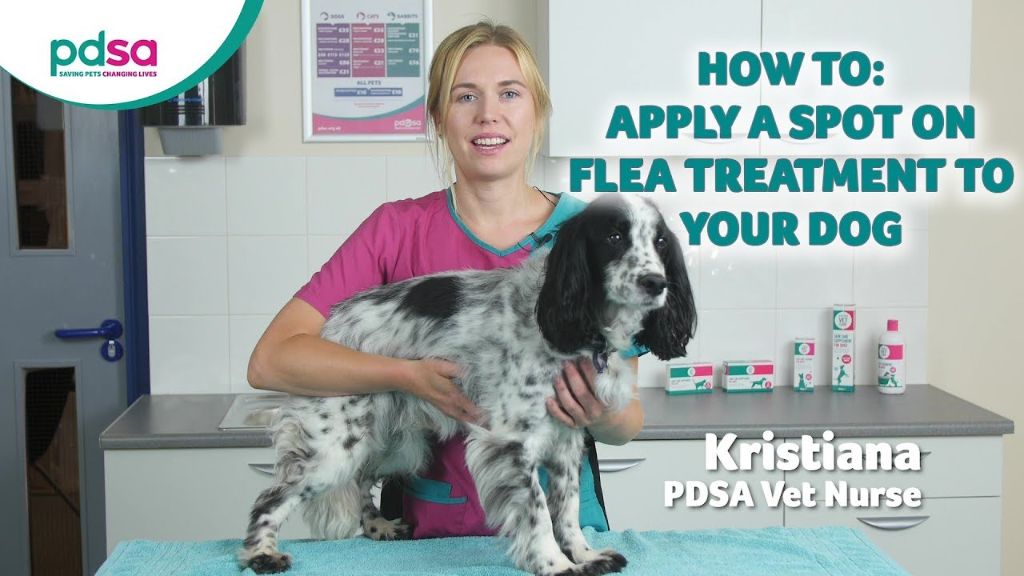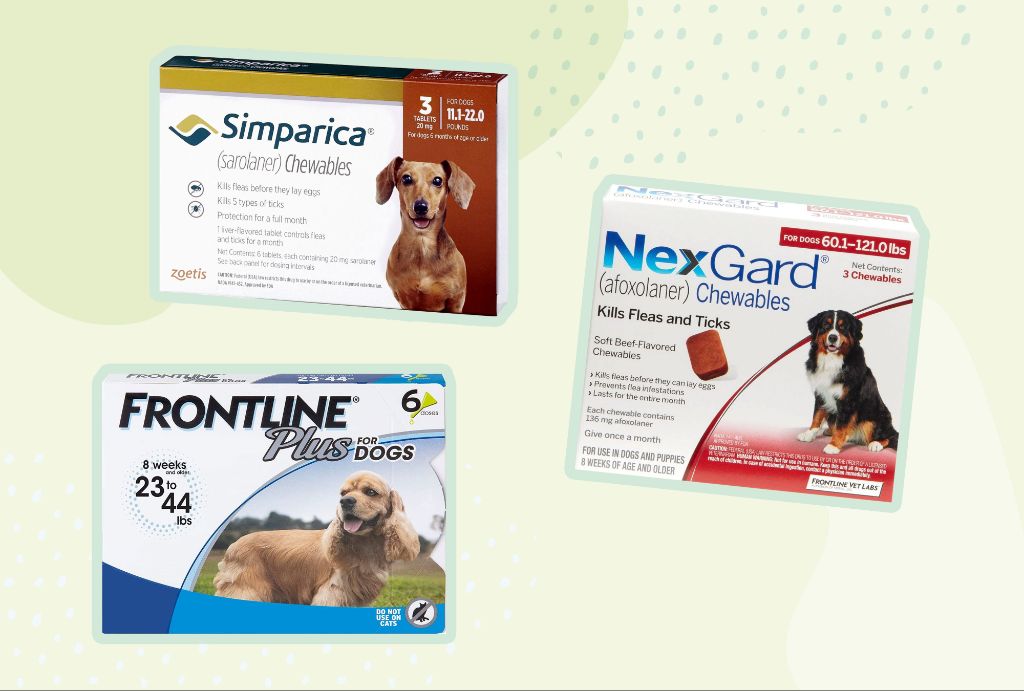Introduction
Fleas are a common nuisance for dog owners. These tiny, jumping insects can quickly infest your home, multiply, and make your dog’s life miserable. Fleas bite and feed on your dog’s blood, causing itchiness, inflammation, skin irritation, and even anemia in severe infestations. No pet owner wants their dog to suffer from fleas. Thankfully, there are many effective flea treatments available today to help eliminate these pests.
When you apply a fast-acting flea treatment to your dog, a common question is “How fast does it start working?” Understandably, you want the product to start killing fleas right away to provide immediate relief. The speed at which today’s topical and oral flea treatments begin working depends on the specific active ingredient and formula.
This article will look at how quickly common flea treatments start killing fleas on dogs. We’ll also provide tips on other ways to control fleas in your home and yard. With the right treatment plan, you can eliminate these irritating parasites and keep your dog comfortable and healthy.
How Fleas Infest Dogs
Fleas go through four life cycle stages: egg, larva, pupa, and adult. Adult fleas live on the dog and feed on its blood. The female flea lays eggs, which fall off into the dog’s environment. The eggs hatch into larvae, which feed on organic debris. The larvae then spin a cocoon and develop into pupae. Inside the cocoon, the pupa transforms into an adult flea, which then emerges and jumps onto a host to continue the cycle.
Fleas spread between dogs primarily through contact. When an infested dog comes into contact with another dog, fleas can jump from one host to another. Flea eggs and larvae may also be transferred on the dog’s bedding or surroundings. Since the eggs, larvae, and pupae live in the environment, they can persist even after treating the dog. This allows re-infestation if preventive measures aren’t taken.
According to the CDC, fleas go through their entire lifecycle in as little as 2 weeks. With rapid reproduction, just a few fleas can turn into an infestation within a short period [1].
Flea Bite Symptoms
Fleas can cause a number of irritating symptoms in dogs. The most common symptom of flea bites is severe itching and scratching. Fleas feed on blood by biting a dog’s skin. Their saliva contains proteins that act as an anticoagulant to keep the blood flowing. Unfortunately for dogs, this saliva is also what causes the itching sensation from flea bites.
Dogs will often scratch, chew and bite at their skin in an attempt to relieve this itching, which can lead to hair loss, red irritated skin, and skin infections. The constant scratching can also cause scabs and hot spots on a dog’s skin.
Another tell-tale sign of a flea infestation is the presence of tiny, dark specks called flea dirt on a dog’s skin and in their fur. Flea dirt is actually digested blood excreted by the fleas. It will show up on a dog’s skin and bedding.

Severe flea infestations can cause skin irritation, infections, hair loss, anemia and even tapeworms. Puppies, older dogs or dogs with weakened immune systems are most at risk for flea-related medical issues.
Potential Health Risks
Flea infestations can pose several health risks to dogs, some of which can be quite serious if left untreated. Three of the main risks are anemia, tapeworms, and skin infections.
Anemia is one of the most common and dangerous conditions caused by fleas. As fleas feed on a dog’s blood, young or small dogs can become anemic if they are overwhelmed with fleas. According to The Dangers Fleas Pose to Your Pet’s Health, flea bite anemia is when the number of fleas depletes a dog’s red blood cell count faster than their body can reproduce them. Puppies under 6 months old are especially susceptible. Symptoms include lethargy, weakness, and pale gums.
Tapeworms are another parasite transmitted by fleas. The immature forms of tapeworm live inside fleas. When a dog swallows an infected flea, the tapeworm then matures inside the dog’s intestines. According to Flea-Related Illnesses that Affect Your Dog, tapeworms rob nutrients from the dog’s food which can lead to weight loss or failure to thrive in puppies. Tapeworm segments may be visible in dog feces or around their anus.
Finally, flea saliva can trigger skin allergies and infections on dogs. Flea allergy dermatitis is extremely itchy and leads to hair loss, reddened skin, hot spots, and secondary bacterial infections. Scratching can cause further wounds vulnerable to infection. Treatment involves addressing both the allergies and infections, according to 4 Health Problems Fleas Can Create for Your Dog.
Types of Flea Treatments
There are several different types of flea treatments available for dogs:
Oral Treatments
Oral flea and tick medications like Capstar, Comfortis, Nexgard, Simparica, and Trifexis are given to dogs by mouth in the form of flavored tablets or chewables. They work by entering the dog’s bloodstream and killing fleas and ticks that bite the treated dog (1). Oral treatments provide whole-body protection and are very effective at killing fleas and ticks.
Topical Treatments
Topical flea and tick treatments like Frontline, Advantix, Seresto, and Vectra 3D are applied to the dog’s skin, usually between the shoulders. The medication spreads through the dog’s oils in the skin to repel and kill fleas and ticks on contact (2). Topicals provide convenient spot treatment.
Collars
Flea and tick collars like Seresto release small amounts of insecticide onto the dog’s fur to repel and kill fleas and ticks. They provide continuous protection for several months (2).
Shampoos and Dips
Anti-flea shampoos and dips like Adams Plus Flea & Tick Shampoo kill fleas on contact and provide short-term protection. They are useful for washing fleas off dogs after heavy infestations but don’t provide long-lasting flea control (3).
Premise Sprays
Premise sprays can be applied around a dog’s living spaces like their bedding area, under furniture, and on carpets to kill flea eggs and larvae where they develop. This provides environmental flea control (3).
How Quickly They Work
Flea treatments kill fleas at different rates depending on the type of product:
Oral medications – Flea pills like ivermectin, spinosad, and lufenuron begin working in 30 minutes to 2 hours. They are absorbed into the bloodstream and poison fleas when they bite the dog.

Topical spot-ons – Topical flea treatments like Frontline, Revolution, and Advantage II start killing fleas within 12-24 hours. The product spreads over the skin and coat upon application.
Oral chews – Chewable tablets like Nexgard, Bravecto, and Simparica begin working within 8 hours. The medication absorbs into the bloodstream after ingestion.
Sprays – Flea sprays like essential oil sprays and insecticide sprays kill fleas on contact, but only provide short-term protection. Reapplication is needed frequently.
Collars – Flea collars like Sentry Fiproguard and Hartz Ultraguard work continuously by slowly releasing medication. It can take up to 48 hours before fleas start dying.
Other Flea Control Tips
In addition to flea treatments, there are some other ways to help control fleas in your home and yard:
Vacuuming regularly can help remove flea eggs and larvae from carpets, floors, and furniture. Be sure to empty the vacuum after each use. Steam cleaning carpets and upholstery can also help kill fleas and eggs.
Wash your dog’s bedding, blankets, pillows, and other washable items frequently using hot water to kill any fleas or eggs.
You can treat your yard with sprays containing insect growth regulators, which prevent flea eggs and larvae from developing into adults. Focus on areas your dog frequents.
Prevention
Year-round flea prevention for dogs is crucial to protect their health and comfort. According to Petco, fleas can live indoors all year and a single flea can lay up to 50 eggs per day. Just a few fleas can lead to a major infestation. Preventative flea and tick medication for dogs, given consistently year-round, can stop this cycle and prevent infestations from taking hold.
There are many effective monthly oral and topical flea and tick preventions for dogs. Products like Nexgard, Bravecto, Simparica, and Seresto collars provide continuous protection when given consistently every month. This constant coverage keeps fleas from ever getting a foothold. Without this, any gaps in prevention can allow fleas to gain traction and rapidly multiply.

Veterinarians strongly recommend never skipping or delaying monthly flea and tick prevention for dogs. Missed doses undermine their effectiveness. Consistent prevention secures your dog’s health and brings peace of mind knowing fleas and ticks stand no chance.
When to See a Vet
In most cases, flea infestations can be treated at home with over-the-counter products. However, you may need to see a veterinarian if:
Your dog has a severe flea infestation. Signs include excessive scratching and numerous fleas visible on their skin and coat. Severe infestations allow fleas to rapidly multiply, increasing the risk of anemia and skin infections, so prompt veterinary treatment is recommended (1).
Your dog is a puppy or elderly. Young and old dogs are more vulnerable to flea-borne diseases and anemia from blood loss. Veterinary advice can help protect their health (2).
Flea products don’t seem to be working. If fleas persist after proper use of flea control products, your vet can recommend alternative treatments tailored to your dog.
Your dog develops complications. Allergic reactions, tapeworms, skin infections or anemia may require medications prescribed by your vet for treatment.
Seeing your vet for flea infestations allows tailored treatment based on your dog’s age, health issues, and response to initial treatment attempts. Prompt veterinary care can help relieve your dog’s discomfort and prevent further health complications.
(1) https://www.petmd.com/dog/general-health/how-to-handle-fleas-on-dogs
(2) https://www.vets-now.com/pet-care-advice/how-to-get-rid-of-fleas/
Conclusion
In summary, when treating a dog for fleas, the speed of effectiveness depends on the specific product used. Some over-the-counter topicals like Frontline and Advantage II provide fast relief, killing adult fleas within 24 hours. Oral treatments and collars work more gradually over weeks or months to interrupt the flea life cycle. For severe infestations, prescription products and foggers may provide the quickest results. Additional control methods like washing bedding on hot, vacuuming regularly, and treating the yard help manage fleas in the environment.
The key points are:

- Fleas can multiply quickly and bite humans and pets.
- Look for signs of fleas like itching and “flea dirt.”
- Treat all pets in the household and use environmental control.
- Topical and oral treatments work at different speeds; prescription products are fastest.
- Vacuum and wash bedding to remove eggs and larvae.
- Prevent re-infestation with ongoing prevention.
- See your vet if fleas persist after treatment.
With vigilance and integrated pest management, dog owners can control fleas and keep their pets comfortable.